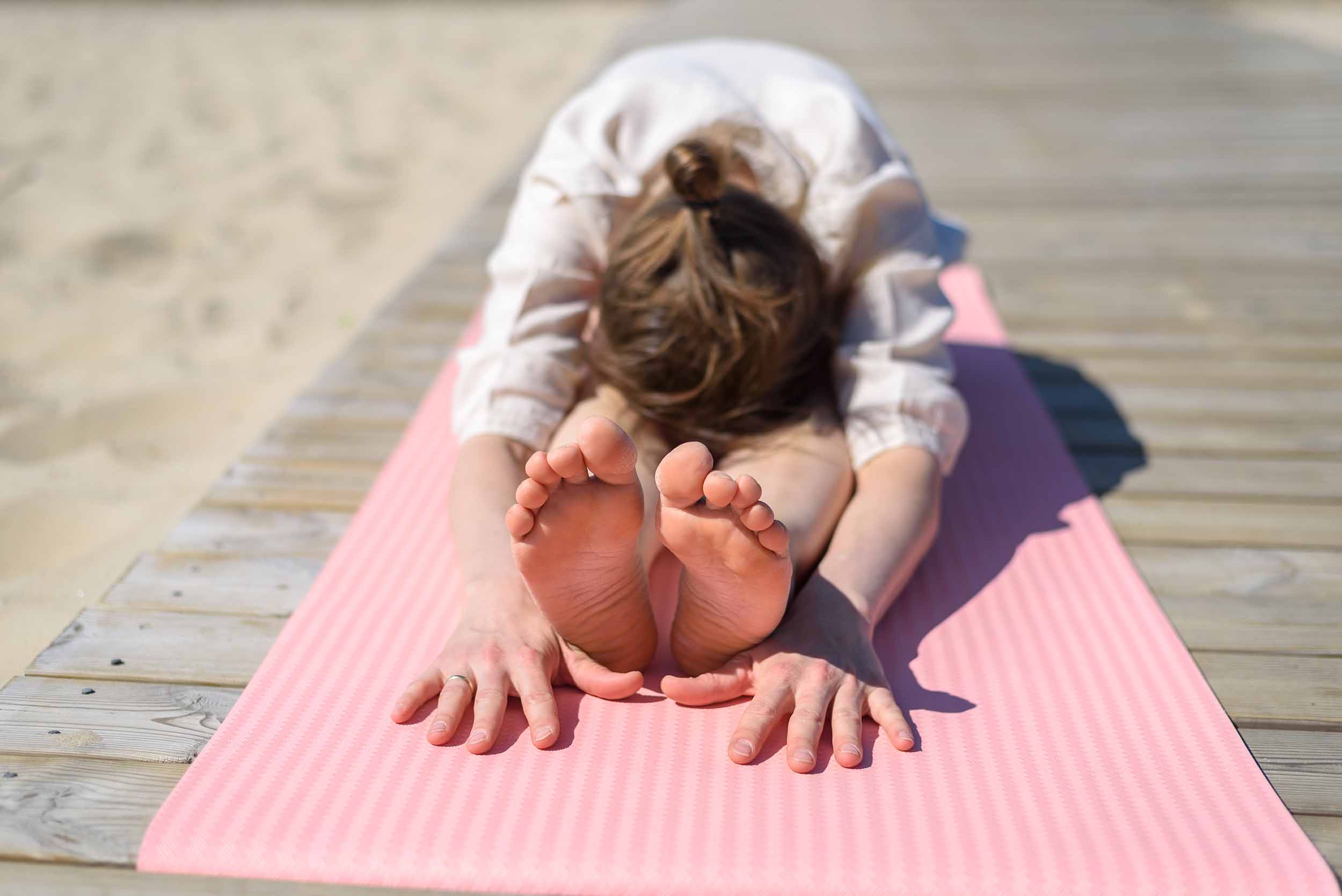Yoga Poses for Beginners
| By Dan Kirby | 0 Comments

Monica
Ālaya Yoga
Yoga Poses for Beginners
- January 19, 2022
Beginning your Yoga Journey? Here is a list of 5 yoga poses for beginners to start with.
Many of the things we do for fitness today involves rigorous strength training, such as weight training, running and cardio, but all of this comes at the expense of flexibility and the mental relaxation and mindfulness that yoga provides.
Along with the physical benefits of yoga, the breathwork involved in yoga allows our body to obtain the most benefits out of each physical posture we do.
If you find yourself intimidated to start your yoga journey, or maybe you’ve just been out of touch with your yoga practice and would like to start again, here are a few yoga poses for beginners you can try the next time you’re on the mat.
Finding yourself intimidated to start your yoga journey, here are a few yoga poses for beginners you can try the next time you’re on the mat.
Seated Forward Fold
A seated forward fold is a relaxing yet active stretch that improves flexibility as well as lengthens the spine and stretches your entire body. This pose helps relieve a lot of the stress that we hold in our bodies along with providing a gentle stretch to all the big muscle groups in our body.
Benefits of this pose:
- Lengthens and stretches the spine, as well as provides a gentle stretch to the entire body
- Massages the digestive organs, and relieves digestive problems such as constipation
- Great for problems with the sciatica
- Relaxing and gentle stretch for the hamstrings and the backs of the legs
- Calms the nervous system and relaxes the mind
Beginners tip:
Even though this is a foundational yoga pose, a lot of yoga practitioners struggle with this pose. If you find yourself unable to reach your feet with your hands, rest your hands on your shins as you fold forward with your palms facing upwards as you keep your focus on lengthening your spine.
Downward Facing Dog
The downward-facing dog is a wonderful foundational yoga asana that strengthens and stretches our entire body. This pose can sometimes feel challenging but over time with repetition, one can achieve all the great benefits that this pose offers.
Benefits of this pose:
- The downward-facing dog is equal parts stretching and strengthening for the entire body
- Opens as well as strengthens the shoulders
- Stretches the calves and the feet
- Lengthens the hamstrings
Beginners tip:
This asana offers a deep stretch to our upper body as well as lower body. To start with, keep your knees bent and keep your attention on lengthening through the spine. You can also walk out your feet to engage both your legs individually.
If this pose feels challenging for you, try a puppy pose to start out with. Bring your knees down to the ground, and stretch your arms forward while lifting your hips and arching your back.
Bridge Pose
Bridge pose is a chest opening yoga asana. It is typically performed towards the end of a yoga session. It provides a gentle stretch to the back and one can reap the benefits of an inversion without physically being upside down.
Benefits of this pose:
- Stretches the chest, neck and shoulders and lengthens the spine.
- Calms the mind and the body and is a wonderful stretch for cooling the body down.
- Strengthens the calves, hamstrings, glutes as well as ankles.
- Opens the chest and the heart.
- Helps relieve menstrual discomfort.
Beginners tip:
This pose can be strengthening as well as restorative. While the more advanced variation involves interlacing your fingers underneath your back, you can also place your palms flat on the ground next to you to provide more stability. Lift your hips and place a bolster, cushion or yoga block directly underneath the sacrum to provide support to your lower back.
Triangle Pose
Triangle pose is a standing pose that is great for both advanced as well as beginner yoga practitioners as this asana has many variations one can use. It’s a great pose that improves both your physical and mental health.
Benefits of this pose:
- This pose strengthens your core, in turn improving your stability.
- Stretches and lengthens the spine while also improving spine mobility.
- Targets the lower back, where people often carry a lot of tension resulting in reduced anxiety.
- Opens and stretches the hips and the shoulders.
Beginners tip:
If it’s challenging to reach the floor with your hand, you can reach for your shin or your knee. Another variation is resting your elbow on your knee to provide more stability and support.
Child Pose
The child’s pose is a gentle beginner pose. Even though this pose may feel like rest, you’re actively engaging your back as well as your hips to achieve a gentle stretch throughout your body. It works as a great stretch to warm up your body before getting into more advanced poses. It also gives you the chance to reconnect with your breath.
Benefits of this pose:
- A gentle stretch for the back, ankles, hips ad the spine
- It can help relieve back pain
- Active rest for the body during your yoga practice
- Relaxes the mind and the body
Beginners tip:
This pose can be very calming and restorative. You can keep your knees together or separated depending on whichever pose feels more comfortable to your body. To achieve even more relaxation, place a cushion or a bolster underneath your chest for additional support.

Want to learn more about yoga?
Our online yoga classes and memberships are completely beginner-friendly, with up to four live yoga classes each day suitable for new starters to yoga.



